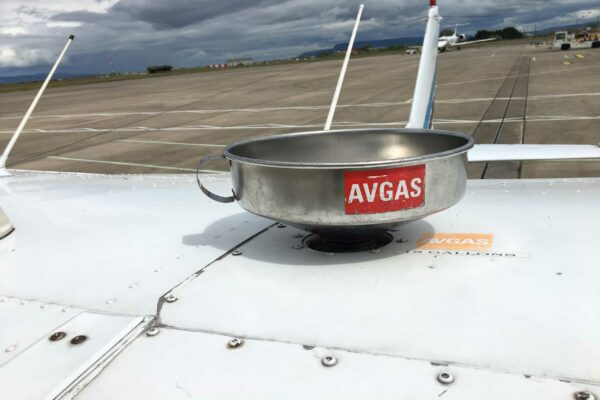It must be that time of year – the evenings are longer and my inbox is filled with ‘Return to Flying’ advice via SkyWise. There is also more activity in the open FIR and airspace warnings, and restrictions proliferate. Sometimes the moving map can look like an obstacle course. So this month I felt like delving into some of the perhaps lesser known features you will see on the VFR chart or in Notams.
‘Other activities’
A fellow aviator recently drew my attention to the appearance of a new ‘laser site’ warning over the Chilbolton Observatory in Hampshire. Some readers may be familiar with the UK’s various laser sites, but they are not a hazard that I had given much thought to.
The notion of lasers being shone into the sky did sound ominous, but I was not aware of what dangers or restrictions might apply to overflight.
The applicable warning was published as a VFR chart update and Notam. The description indicated that it was from the surface to unlimited altitude, and that the ‘visible beam is potentially hazardous to aircrew at night’.
However, the operator undertakes to ‘extinguish the beam when aircraft are sighted in the vicinity’. The site will be a permanent addition to the VFR chart, although it did not make the recent March edition.
A bit more research into activities at Chilbolton suggested the laser is a lidar system, used for profiling cloud formations and similar atmospheric purposes. Most of the time it operates in the ultraviolet range, which is invisible to the human eye.
The small size of the site suggests the beam shines at an almost vertical angle. In short, it’s probably not going to down a passing Cherokee.
From a regulatory point of view, most laser sites do not have a status as a prohibited, restricted or danger area and are listed in ENR 5.3 of the AIP, under ‘Other activities of a dangerous nature and other potential hazards’. ENR 5.3 also includes small arms ranges (the warning normally extending up to 500ft), gas venting sites, weather balloon launch points and other miscellaneous items. I cannot say I’ve ever had much cause to look up the contents of ENR 5.3, but if you have identified something on your potential route, it may provide further information.
Sports and recreation
Probably of more interest is the contents of ENR 5.5 – ‘Aerial Sporting and Recreational Activities’. This contains information on sites of activities such as gliding, paragliding, parachuting and other sporting aviation.
Much of this is also available through our trusted moving map devices, but there is no harm in knowing the official source as well.
One hazard that has received increased focus recently is glider winch sites. Until I did some gliding, I had a limited concept of what a winch launch consisted of. Essentially a steel cable attaches the glider to a winch, positioned several hundred metres upwind.
The winch pulls the glider very rapidly to flying speed. The cable remains attached as the glider climbs and is disconnected as it nears the vertical position. After the cable is released, a parachute deploys to slow its descent to Earth.
There is no regulatory requirement to avoid glider sites, but clearly the cable represents a significant hazard to passing traffic. The altitude to which winch launching takes place is indicated on VFR charts (for example ‘2.5’ means 2,500 ft).
Overflight of a winch site below this altitude should be avoided and despite increased focus on the issue, many glider clubs report this still occurs.
Unusual activity and training aerodromes
A couple of terms that entered ENR 5.5 and the VFR charts several years ago are ‘training aerodromes’ and ‘aerodromes of unusual activity’. These were introduced to draw attention to locations that might be busy with training or other flying, but lacked a notified air traffic zone (ATZ).
I am not sure if there is an exact definition of ‘unusual’ in this context, but for example Dunsfold in Surrey (of Top Gear fame) has such a designation. On the VFR chart, a ‘T’ (training) or ‘U’ (unusual activity) is added adjacent to the aerodrome symbol.
It’s worth remembering that the existence or lack of an ATZ is not an indicator of how active an aerodrome may be. It is convention that licensed aerodromes have an ATZ, since the licence holder is essentially the custodian of the airspace within it.
However, about 15 years ago the rules were changed to allow flight training at unlicensed aerodromes, and as a result a few aerodromes surrendered their licence and lost the associated ATZ.
It is possible for an unlicensed aerodrome to apply for an ATZ, but it would normally only be granted if there was an Aerodrome Flight Information Service (AFISO) in place, which is costly and involved.
The point to take away is that there are many busy aerodromes without an ATZ and transiting close to them needs consideration of circuit height and whether a radio call is appropriate. Anecdotally, aerodromes have found that after losing their ATZ, the amount of passing traffic increases, possibly not aware that the aerodrome is just as active as before.
This issue may be helped by the suggestion in the Airspace Modernisation Strategy of radio mandatory zone (RMZ) arrangements, based on the nature and volume of activity at the aerodrome.
Restricted Areas (Temporary)
RA(T)s tend to be more common during the summer, whether for airshows or other events. SkyDemon, and similar applications, has made complex RA(T)s much easier to interpret, however, it is still important to read the associated Aeronautical Information Circular (AIC) and check the fine print.
It’s often not as bad as it might appear on the map. However, while perusing CHIRP recently I came across an incident from last year in which some possibly ambiguous wording in the AIC for a RA(T) had led a pilot to believe that he had complied with the conditions required to enter the restriction, when in fact this was not the case. AICs can be viewed via the NATS AIS website.








1 comment
PPL training should have a mandatory session in a glider to comprehend that they are not ‘just gliders’, and they cannot ‘just get out of the way’. I have had words with other pilots who when it was their turn to be P1 dismissed gliders as irrelevant. I tried explaining that we, with power, were far more manoeuvrable and it was our job to get out of the way, another time explaining about winch launches and how it was not a good idea to fly over or near to a gliding site. Once we were on the ground I expressed myself with greater emphasis. I have had a number of sessions in a glider and it brought home to me how they have different needs to power – even when the winch consists of someone driving a landrover very fast down a military runway in Egypt!